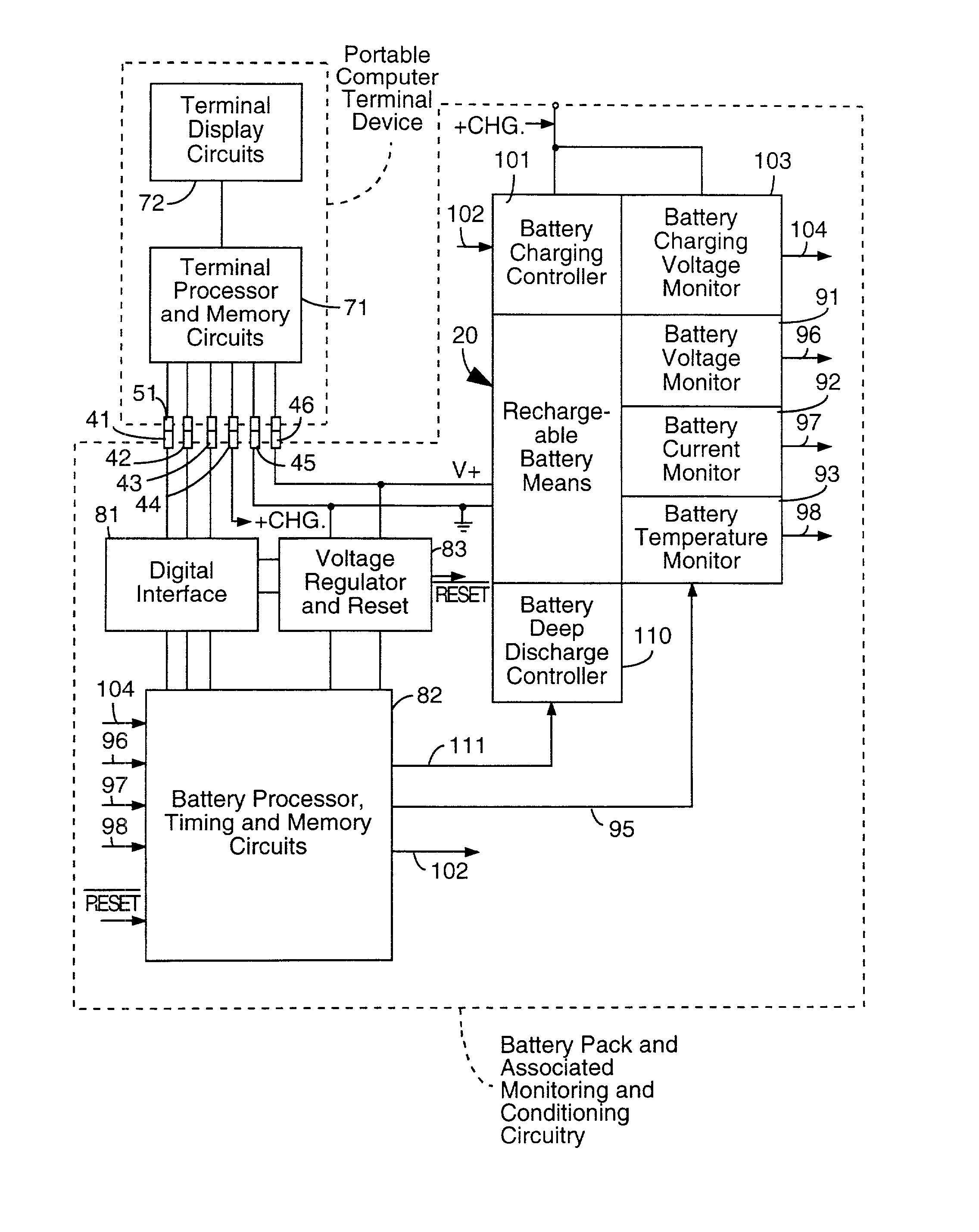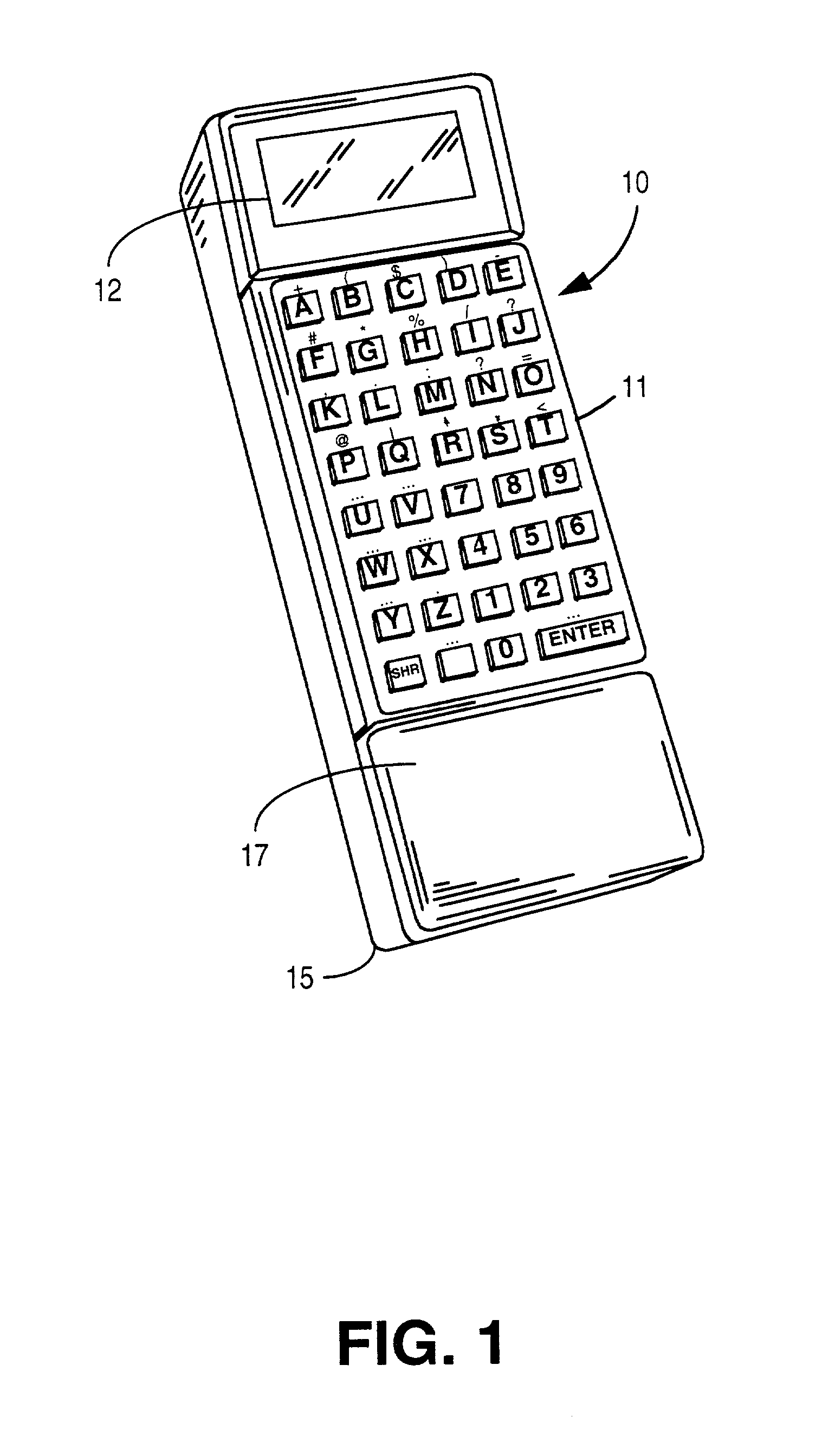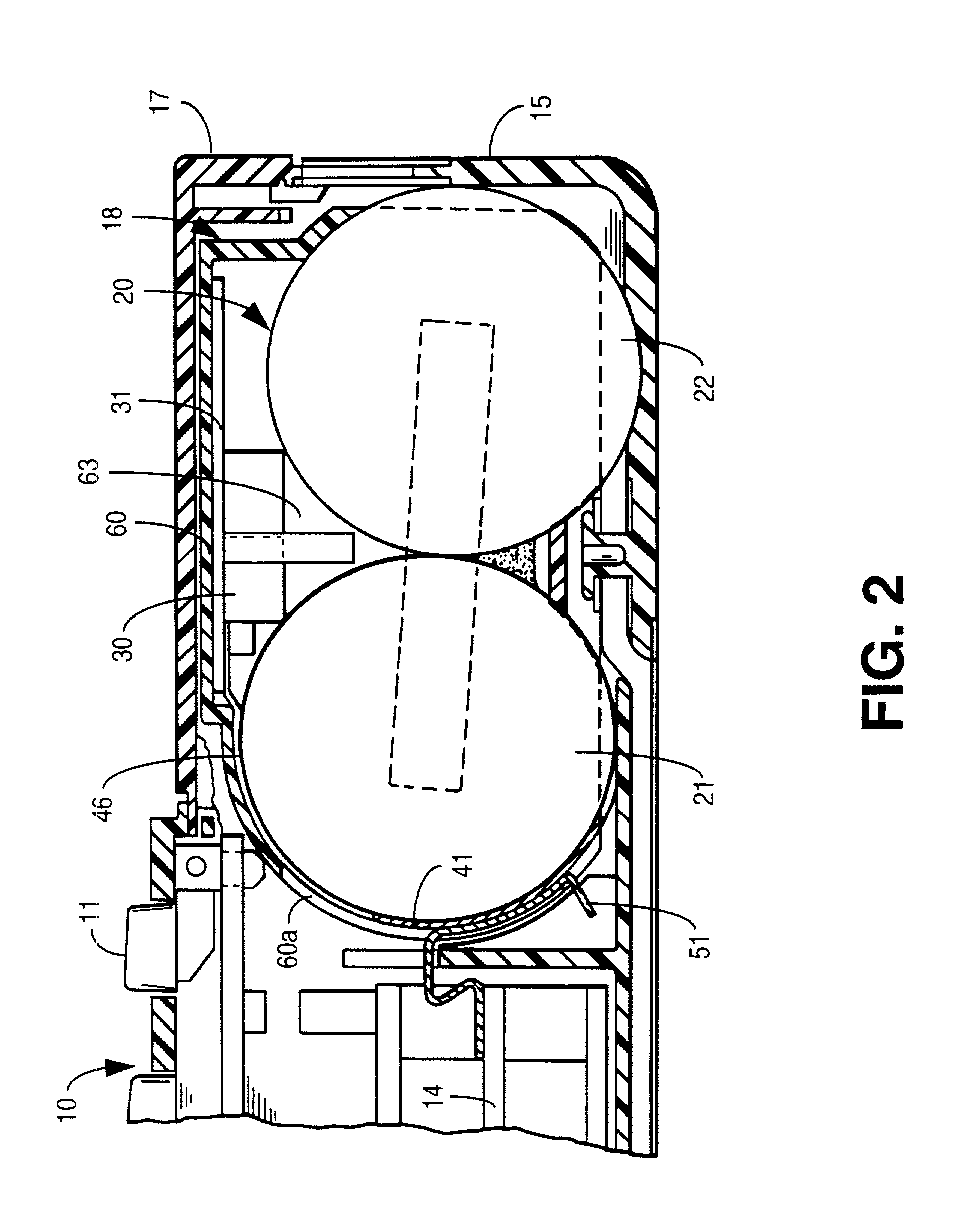Battery pack having memory
- Summary
- Abstract
- Description
- Claims
- Application Information
AI Technical Summary
Benefits of technology
Problems solved by technology
Method used
Image
Examples
Embodiment Construction
of FIG. 37
[0270] Steps 29-1 to 29-12 are not inconsistent with the processing steps of FIG. 37, and could be used therein to identify a given battery pack, and / or to determine terminal load current during charging.
[0271] Steps 29-7 to 29-14 could be substituted for step 37-4 if desired.
[0272] Also, step 29-14 could be used in place of step 37-6, whereupon, steps 37-9 to 37-12 could be omitted. Steps 29-14 could also be substituted for step 37-2 or step 37-17.
[0273] It may be helpful to give the operation of FIG. 37 for the case of a specific example. If ambient temperature of the charge system which is to receive a terminal or battery pack is 20.degree. C. (68.degree. F. ) and the pack is initially at 0.degree. C. (32.degree. F.), step 37-2 will apply until the battery pack reaches a temperature of 10.degree. C. (50.degree. F.). At this time, the temperature differential will be 10.degree. C., and step 37-13 will be executed. For a battery according to Table II, the value of fast ch...
PUM
 Login to View More
Login to View More Abstract
Description
Claims
Application Information
 Login to View More
Login to View More - R&D
- Intellectual Property
- Life Sciences
- Materials
- Tech Scout
- Unparalleled Data Quality
- Higher Quality Content
- 60% Fewer Hallucinations
Browse by: Latest US Patents, China's latest patents, Technical Efficacy Thesaurus, Application Domain, Technology Topic, Popular Technical Reports.
© 2025 PatSnap. All rights reserved.Legal|Privacy policy|Modern Slavery Act Transparency Statement|Sitemap|About US| Contact US: help@patsnap.com



